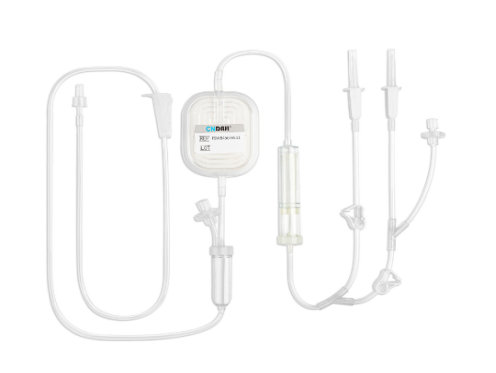Leukoreduction is a critical step in modern blood banking, aiming to remove white blood cells (WBCs) from blood products to enhance safety and improve patient outcomes. While many blood banks adopt leukoreduction filters, the performance of these filters can vary widely, impacting the quality of blood components and the risk of transfusion-related complications. This article examines the performance of leukoreduction filters , compares their efficiency, and explores key factors that blood banks must consider when selecting and implementing these filters.
Leukoreduction involves the removal of WBCs from red blood cells (RBCs), platelets, or plasma. Residual leukocytes in blood products can cause febrile non-hemolytic transfusion reactions, alloimmunization, and the transmission of leukotropic viruses. Effective leukoreduction reduces these risks, making filtration a standard practice in many countries. The process typically employs specialized filters that physically trap or chemically bind WBCs while allowing red blood cells and platelets to pass through.

The primary metric for evaluating leukoreduction filters is their efficiency in removing white blood cells. High-performance filters achieve residual WBC counts below 1 × 10⁶ per unit of blood, which is the recommended standard in many regulatory guidelines. Differences in filter media, pore size, and flow dynamics can lead to variation in WBC removal efficiency. Blood banks must consider this metric carefully, as incomplete leukoreduction can compromise patient safety.
While removing WBCs, filters must minimize the loss of platelets and red blood cells. Filters with excessive trapping capacity may inadvertently reduce platelet counts or hemoglobin levels in RBC units. Optimal filters strike a balance between efficient WBC removal and high recovery rates of essential blood components, ensuring transfusion efficacy.
Filtration should not damage red blood cells or platelets. Mechanical stress during filtration, such as excessive pressure or rapid flow rates, can cause hemolysis or platelet activation. Comparing filters based on post-filtration hemolysis levels and platelet functionality helps blood banks select products that maintain the integrity of blood components.
The time required to process a unit of blood affects operational efficiency, especially in high-volume blood banks. Filters that offer rapid leukoreduction without compromising quality are preferred in clinical settings where timely availability of blood products is critical. Throughput considerations are particularly relevant during emergency or mass transfusion scenarios.
Depth filters are designed with thick porous media that trap leukocytes throughout the filter matrix. These filters generally provide high WBC removal efficiency and low hemolysis rates. However, they may exhibit slower filtration rates and require careful monitoring to prevent clot formation or filter blockage.
Membrane filters rely on fine polymeric membranes with uniform pore sizes to trap leukocytes. They offer consistent performance and are often easier to standardize across multiple blood units. Membrane filters tend to have shorter filtration times but may cause higher platelet loss compared to depth filters.
Composite filters combine features of depth and membrane filters to optimize performance. By layering different media types, these filters aim to maximize WBC removal while preserving red blood cells and platelets. They are often used in high-demand blood centers seeking both efficiency and quality.
Donor variability, including hematocrit levels, platelet counts, and blood viscosity, can influence filtration performance. Blood with higher viscosity may require longer filtration times, while low platelet counts increase the risk of platelet loss during filtration. Blood banks must account for these factors when evaluating filter efficiency.
The condition of blood units before filtration impacts filter performance. Cold storage, improper agitation, or extended storage duration may affect leukocyte activity and filtration efficiency. Proper handling and adherence to storage guidelines are essential to achieve optimal results.
Filters must be compatible with blood collection systems, tubing sets, and component bags. Standardizing filters across a blood bank simplifies training, reduces operational errors, and ensures consistent performance. Compatibility with automated processing systems can further enhance efficiency and throughput.
Even the best filters can underperform if not used correctly. Proper priming, flow rate control, and adherence to manufacturer instructions are crucial. Blood banks should provide comprehensive training and regular competency assessments to ensure operators maintain consistent filtration quality.
High-performance leukoreduction filters significantly reduce the incidence of febrile reactions and alloimmunization, improving patient safety. In immunocompromised patients, such as those undergoing chemotherapy, effective leukoreduction is critical to minimize infection risk and adverse immune responses.
Filters that preserve platelet function and RBC integrity contribute to longer shelf-life and higher therapeutic efficacy. Blood centers that prioritize filter performance can ensure that transfused products deliver maximum clinical benefit while minimizing wastage due to hemolysis or platelet loss.
Filters with shorter processing times and high recovery rates allow blood banks to manage large volumes efficiently. This is particularly valuable during peak donation periods, emergency situations, or large-scale clinical trials.
Automated leukoreduction systems are gaining popularity due to their ability to streamline operations, reduce human error, and ensure consistent filter performance. Integration with digital tracking systems provides traceability, quality monitoring, and compliance reporting.
Some modern filters incorporate pathogen reduction technologies alongside WBC removal, offering dual benefits. These innovations enhance product safety, reduce transfusion-transmitted infections, and meet evolving regulatory standards.
Ongoing research focuses on optimizing filter media, pore structures, and flow dynamics to maximize leukoreduction efficiency while minimizing blood component loss. Blood banks are increasingly evaluating performance metrics such as post-filtration platelet activation, RBC deformability, and hemolysis rates to guide filter selection.
Leukoreduction filter performance is a critical determinant of blood product safety, quality, and operational efficiency in blood banks. Comparing filters based on WBC removal efficiency, platelet and RBC recovery, hemolysis rates, and filtration time allows blood centers to make informed decisions that enhance patient outcomes. Adapting to emerging technologies, standardizing procedures, and emphasizing staff training further improve filtration performance.
For reliable, high-quality leukoreduction filters and comprehensive blood bank solutions, DaJiMed offers innovative products designed to meet the rigorous demands of modern blood centers while ensuring patient safety and operational efficiency.
Copyright © Guangzhou DaJi Medical Science and Technology Co., Ltd. All Rights Reserved Sitemap | Powered by 